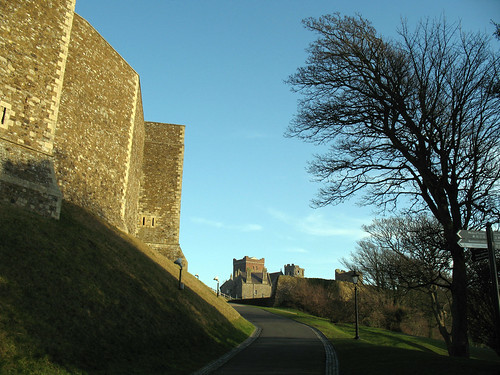One of the oldest buildings that stands at Dover Castle is the Roman pharos or lighthouse. It stands at the highest point within the castle and was probably built in the second century AD when the Romans were developing the port at Dover.
It was constructed as an octagonal tower using local flint and Roman bricks, but only its lowest four stages survive. Its rectangular interior had a series of timber-floored chambers; at the top there was probably a platform for some kind of brazier. The lighthouse keeper might have lived in or next to the tower, but no evidence of such occupation has ever been found. It seems likely that the lighthouse ceased to be used regularly after the Romans left in the early fifth century, but a 12th-century reference to a lighthouse keeper here suggests that it may then have again been in operation.
In later years the exterior was refaced and Humphrey, duke of Gloucester rebuilt the top as bell-tower for the neighbouring church between 1415 and 1437.
Next to the lighthouse stands the church of St Mary-in-Castro, Which was built in around 1000.
The reasons for the church’s location on this windswept chalk hill remain unclear. The most likely explanation is that it was built within a now-vanished late-Saxon burgh, or defensive enclosure.
The church was restored during the 19th century and all though a large part of the church remains original some modifications were made. *
*All information from the guidebook.










Simply magnificent, Cherie.
Are you talking about my photography skills my dear James?
You have two beautiful POVs of this magnificent place, Cherie. One day I’d like to see it with my own eyes!
I do hope you get the chance I am sure you would love it and I can just imagine the wonderful photographs that you would capture
Lovely clear blue sky in that second picture.
Can you send some of it in a northerly direction to shift these here clouds.
We have had clouds too. But this afternoon they have cleared up and we have glorious sunshine.